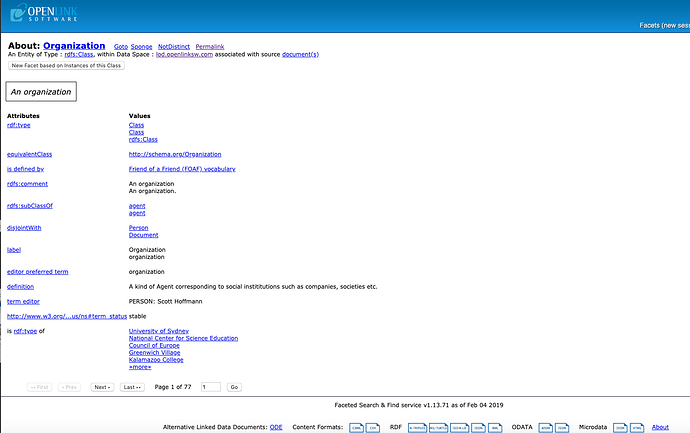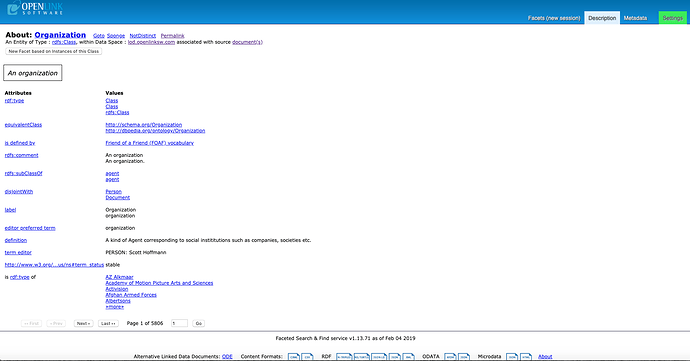Combining (or meshing) data from different data sources is a common challenge that’s addressed (intelligently) by the application of reasoning and inference. They key thing here is that the ability to reason and infer is informed by the nature of relationship types that provide the core tapestry for structured data representation.
Remember, if the aforementioned tapestry takes the form of hyperlinks (specifically, HTTP URIs) the resulting structured data representation manifests as a Web of Linked Data. In addition, if the HTTP URIs identify entity relationship types described by an Ontology or Vocabulary, we have a Semantic Web of Linked Data, courtesy of a the aforementioned semantics being readable to both humans and machines.
Problem Example
DBpedia, Schema.org, and FOAF are three broadly used ontologies that describe Organization Entity Types (or Classes). Naturally, there are large amounts of RDF-based structured data about Organizations using terms from these ontologies that would benefit from intelligent meshing (or smushing) that produces a merge of instances of equivalent classes.
Solution
What follows are a sequence of SQL commands for creating a simple built-in inference rule that informs the process of merging instances of equivalent classes based on the nature (semantics) of an owl:equivalentClass relationship type (relation).
-- Cleanup i.e., remove any existing rules.
DELETE FROM DB.DBA.SYS_RDF_SCHEMA
WHERE RS_NAME = 'urn:owl:equivalent:class:inference:rules' ;
-- Load owl:equivalentClass relations to a named graph to be used for the built-in inference rule
SPARQL
PREFIX foaf: <http://xmlns.com/foaf/0.1/>
PREFIX schema: <http://schema.org/>
PREFIX dbo: <http://dbpedia.org/ontology/>
WITH
<http://www.openlinksw.com/data/turtle/ontology_mappings/schemas_mappings/SchemaOrgToOpenLink.ttl>
INSERT
{
foaf:Organization owl:equivalentClass schema:Organization .
foaf:Organization owl:equivalentClass dbo:Organization .
foaf:Person owl:equivalentClass schema:Person .
foaf:Person owl:equivalentClass dbo:Person .
} ;
-- Create built-in inference
RDFS_RULE_SET ('urn:owl:equivalent:class:inference:rules', 'http://www.openlinksw.com/data/turtle/ontology_mappings/schemas_mappings/SchemaOrgToOpenLink.ttl') ;
Using Inference Rules
Our live LOD Cloud cache instance hosts 40 Billion+ triples which are available for live ad-hoc querying access, thereby making it a great resource for testing reasoning and inference at large scales.
Organizations Merge
Conclusion
Every data-driven digital transformation initiative depends on the subjective notion of data quality.
Creating a common view of data requires data meshing and reconciliation capabilities that are unleashed by applying reasoning and inference to entity relationship type (relations) semantics.
Virtuoso’s capabilities ensure the ability to exploit this important data virtualization and integration functionality at massive scales. Likewise, it also offers the same capabilities for Small Data interaction patterns where data snippets are assembled and meshed progressively – as part of a SPARQL Query solution production pipeline.

